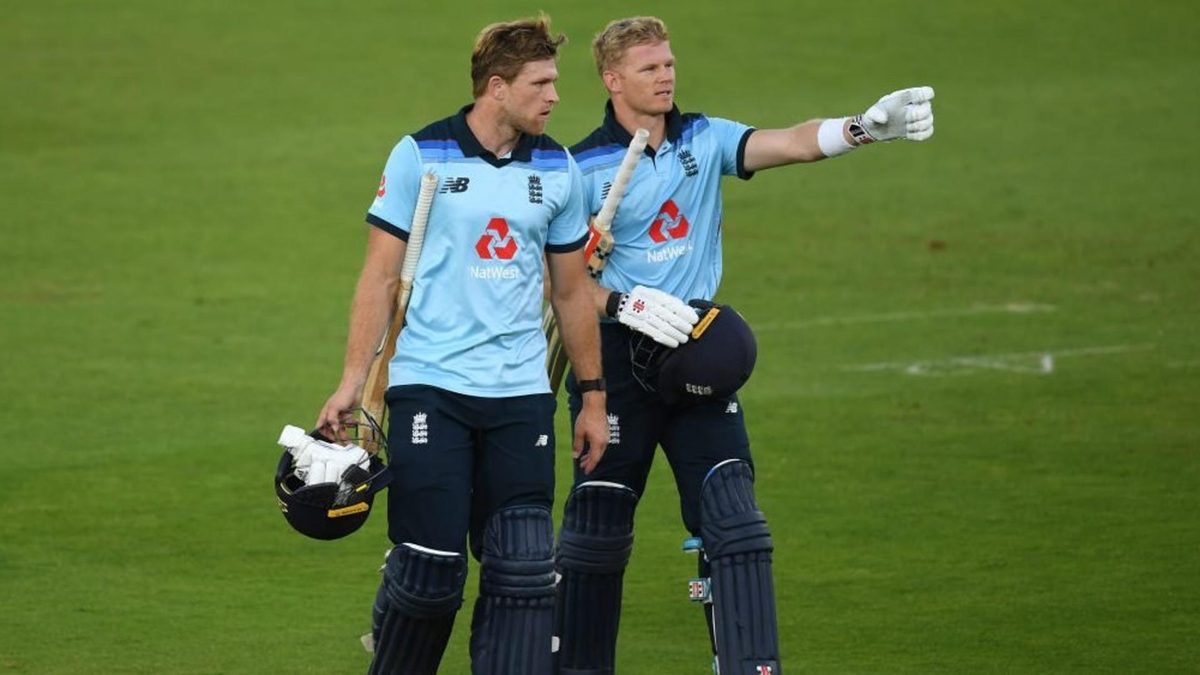
Ben Gardner takes a look at the up-and-down fortunes of the England fringe players during their ODI series against Ireland.
England fielded a stronger line-up in their three-match ODI series against Ireland than they might usually; the Covid-19 pandemic limiting the number of white-ball games on offer and the Super League points on offer meant they couldn’t take them lightly. But England’s Test players being unavailable meant there were opportunities for those on the fringes to enhance their selection cases and push themselves up the pecking order. Here’s a look at who’s hot and who’s not after the week-long wrangle in Southampton.
Pushing for a starting berth
Sam Billings
Had it not been for Joe Denly’s back spasm hours out from the first ODI, Sam Billings might not have featured against Ireland. As it was, he played more than two ODIs in a series for the first time since his debut against New Zealand in 2015, and played a starring role in England’s two wins. Batting with that classic wicketkeeper’s tempo, he swept and reverse-swept and scampered and dashed, ensuring two tricky situations were quickly neutralised. He should have now have moved himself to the head of England’s long queue for a middle-order slot, and while it won’t be soon that a spot becomes available, Billings, at 29, could well be first-choice for England at some point.
David Willey
This was, in a way, the David Willey we’ve always been promised, and the player he’d looked like becoming just before Jofra Archer’s emergence: incision with the ball up top, big hitting with the bat down the order. Having been axed from England’s World Cup squad at the last minute, the Yorkshire left-armer has put himself at the head of the queue to fill in when one of Mark Wood, Chris Woakes, or Jofra Archer is unavailable.
Two questions remain however. Can Willey add the skills to make him more than a new-ball specialist, and can he mould himself from a useful No.8 into a genuine No.7? If he can, then breaking into that front-line seam attack isn’t impossible.
Holding their place in line
Tom Banton
He’s normally an opener for Somerset, and only has a modest List A record to fall back on, so that, by the end of the series, Tom Banton looked like finding his feet in a middle-order berth will be encouraging. However, such is England’s plethora of options, he will need a string of scores in the chances he does get to properly push his claims, and these are likely to come outside of the top two, given Jason Roy and Jonny Bairstow are the two, along with Eoin Morgan, who will be least in need of a rest.
Saqib Mahmood
Saqib Mahmood bowled briskly, if not quite matching the express pace of Archer and Wood, and was the most economical seamer on either side to play more than one game. However, there is work to be done if he is to become England’s replacement for Liam Plunkett, who can break the kind of partnership put on between Paul Stirling and Andrew Balbirnie in the third ODI. None of the Lancastrian’s four wickets came between overs 10-40. England have enough options at the top and the death that Mahmood’s route in is by doing something different.
Reece Topley
Despite only playing one game in the series, there was plenty to like about what Reece Topley had to offer. Coming back from a string of injuries, those natural attributes were still on show, and a tall, left-arm quick bowler will be an attractive proposition to any side. His nine overs cost just 31. However, that an injury kept him out of the final game will be concerning. It’s not the seriousness of the injury, a minor one by all counts, but the fact that niggles continually forcing him to miss games could make it hard to put together an unanswerable case for selection.
Slipping down the greasy pole
Tom Curran
Two and a half years ago, Tom Curran, in front of a raucous Perth crowd keen to see Australia sink their teeth England yet again, claimed 5-35, including figures of 2-1 at the death, to seal a Player of the Match award in only his third ODI. It appeared England had found the end-of-innings expert they had been looking for, a bowler armed not only with the skills and the nous, but the big-moment temperament and appetite for the fight to wrest tight contests their way.
But Curran has claimed just one wicket in his last six ODIs, and couldn’t summon the same kind of magic at the climax of the third ODI to seal a whitewash and lay down a marker. Such are England’s other options that a player standing still will quickly slip down the pecking order, and it was he who missed out for Reece Topley in the second ODI. Were England to name a theoretical first-choice 15 now, it’s plausible Tom Curran might not make the cut.
James Vince
Even if you didn’t watch it, you can probably imagine what it was like. Some eat-your-heart-out drives and some soft dismissals, Vince’s knocks of 25, 16 and 16 bringing his total number of scores between 14 and 33 up to 10 from 14 innings. Five of his games have come against Ireland, three against Bangladesh, one against Afghanistan, two against Sri Lanka, and three against Pakistan.
He has been in and out of the side somewhat, but has also got his goes against relatively weaker oppositions, and neither scored big or quickly. He is a domestic titan, but with no One-Day Cup this season, and other options presenting themselves, we may well have seen the last of Vince in an England ODI shirt.








